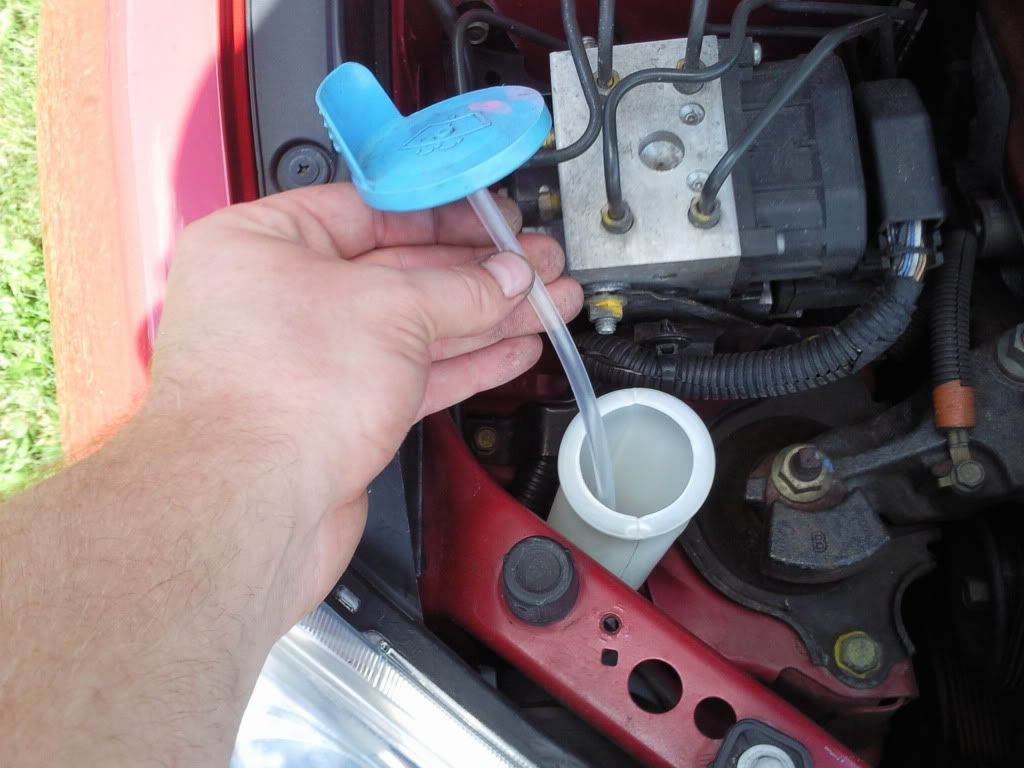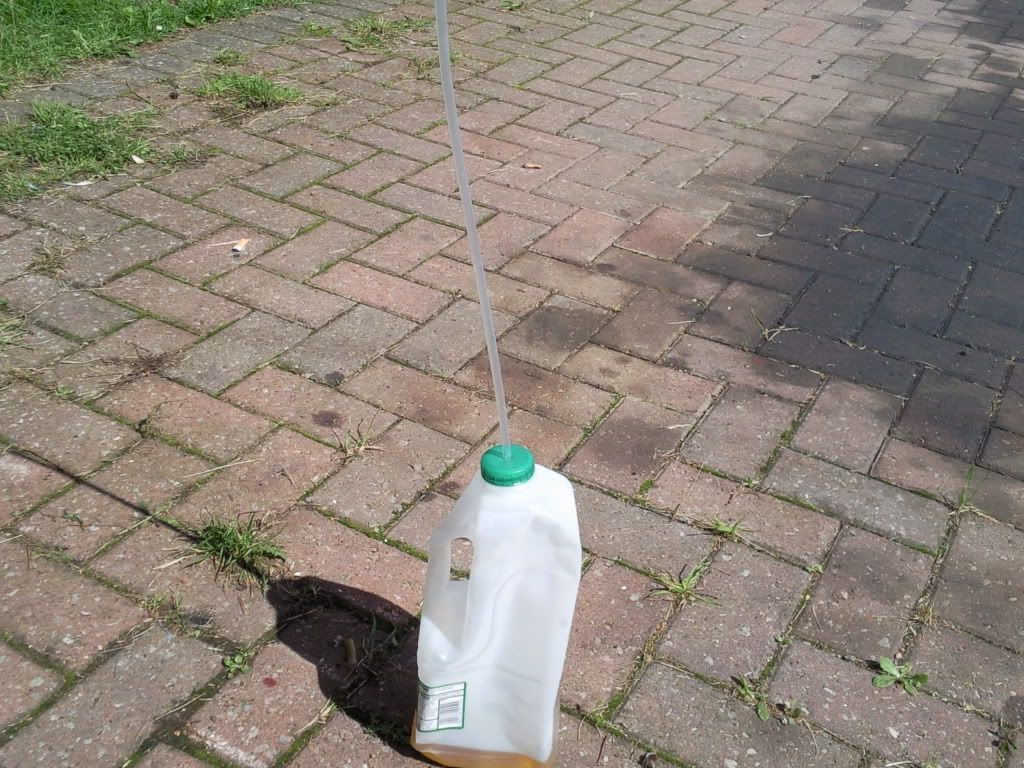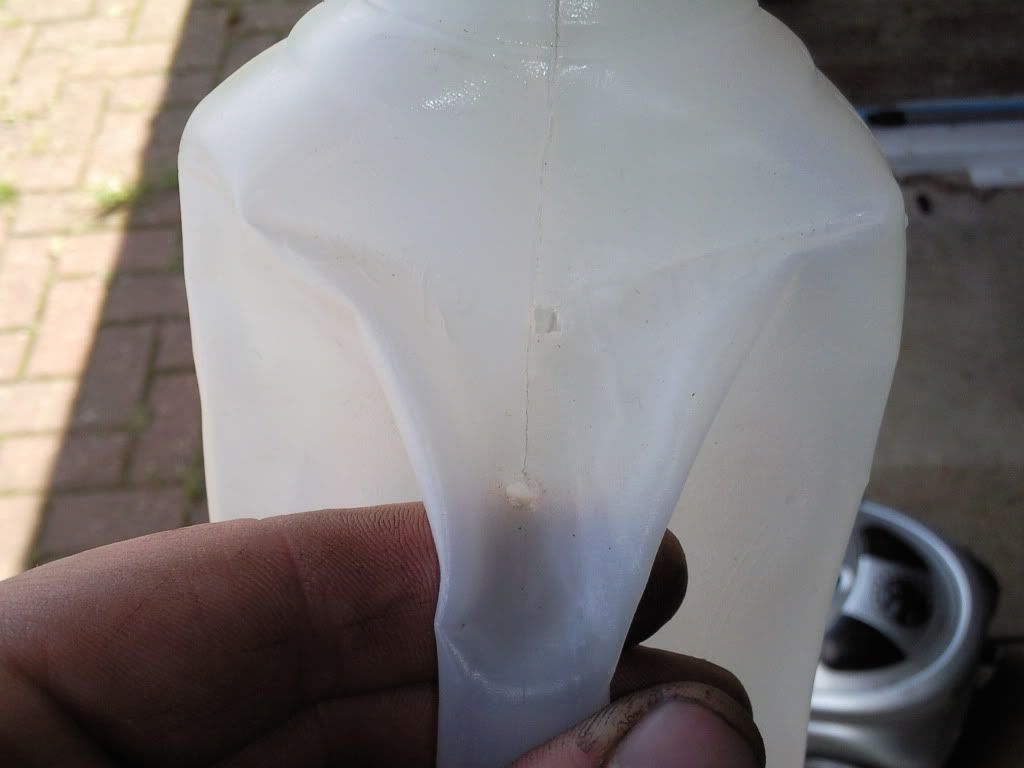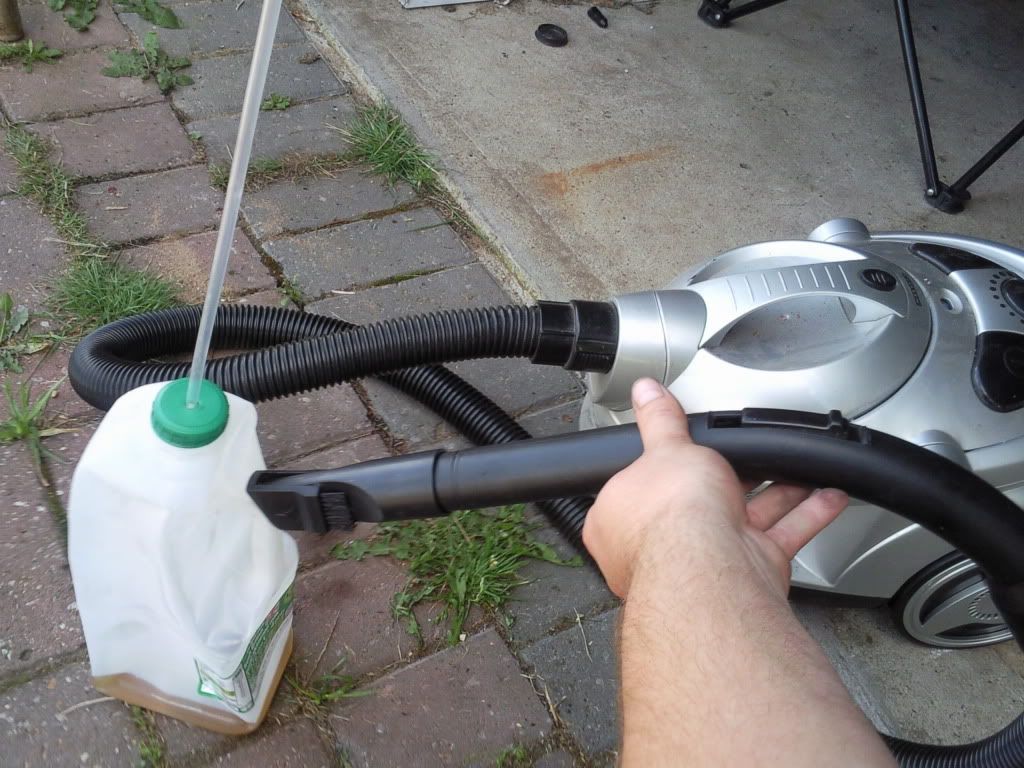This weekend i decided to bleed my clutch hydraulics system as my clutch biting point is getting low on the peddle.
first off what i have learned is the biting point gets lower on the pedal when the clutch is wearing thin, the clutch pedal has no spring return and relies on the main clutch spring to reset the pedal to its highest position through the hydraulics system from the slave cylinder to the master cylinder. Air is bad!
the more the clutch wears the lower the biting point and the lower the start of stroke. i.e the clutch pedal will loose the first 1/2" of pressured travel at the highest point of the pedal. you can check this with your hand to feel when the pressure starts.
before fitting a new clutch i thought it would be a good idea to bleed the clutch system to cross it off the list, I started by using a one way valve system bleed kit.

after attaching the kit to the bleed nipple and loosening the bleed screw you can then pump the pedal to release the fluid into the one way system which is all good but unfortunately you can empty the reservoir in about 3-4 pumps, like i did :evil:.
as soon as air was in the system the clutch pedal hit the floor and stayed there, giving the pedal some pumps with my hand there was no feeling and no movement in the new dot4 fluid i had just topped up.
after seeking some advice from a knowledgeable friend he told me to persist with normal bleeding which is, pedal up open valve push pedal down close valve pull pedal up and repeat. After an hour of normal bleeding and trying different methods of up, down, loosen, tighten i was about to give up and book it into a garage as the pedal still had no feeling and fluid was running through the system and filling the waste fluid bottle but making no pressure.
I remember a bleed tool a garage once used to bleed my brakes which created a vacuum and sucked the fluid from the bleed nipple, so with nothing to loose and no car to get to any shops i had a go at making my own, and it worked
I used the clear pipe from inside the washer filler bottle, a 2 litre milk bottle and a hoover.
I poked a hole in the lid smaller that the pipe so it could create a well enough air seal around it and poked a couple of holes into the handle of the bottle. after attaching the clear pipe to the nipple and slackening it loose i then added a small amount of oil to the bottle to prevent air seeping back up the pipe.
sucking through the holes in the handle with the hoover it created a large vacuum and crushed the bottle but also sucked the reservoir dry within seconds, on the next attempt i got it right and solved the bleeding problem.
I hope this helps anyone who comes across this problem with next to nothing costs.




first off what i have learned is the biting point gets lower on the pedal when the clutch is wearing thin, the clutch pedal has no spring return and relies on the main clutch spring to reset the pedal to its highest position through the hydraulics system from the slave cylinder to the master cylinder. Air is bad!
the more the clutch wears the lower the biting point and the lower the start of stroke. i.e the clutch pedal will loose the first 1/2" of pressured travel at the highest point of the pedal. you can check this with your hand to feel when the pressure starts.
before fitting a new clutch i thought it would be a good idea to bleed the clutch system to cross it off the list, I started by using a one way valve system bleed kit.

after attaching the kit to the bleed nipple and loosening the bleed screw you can then pump the pedal to release the fluid into the one way system which is all good but unfortunately you can empty the reservoir in about 3-4 pumps, like i did :evil:.
as soon as air was in the system the clutch pedal hit the floor and stayed there, giving the pedal some pumps with my hand there was no feeling and no movement in the new dot4 fluid i had just topped up.
after seeking some advice from a knowledgeable friend he told me to persist with normal bleeding which is, pedal up open valve push pedal down close valve pull pedal up and repeat. After an hour of normal bleeding and trying different methods of up, down, loosen, tighten i was about to give up and book it into a garage as the pedal still had no feeling and fluid was running through the system and filling the waste fluid bottle but making no pressure.
I remember a bleed tool a garage once used to bleed my brakes which created a vacuum and sucked the fluid from the bleed nipple, so with nothing to loose and no car to get to any shops i had a go at making my own, and it worked
I used the clear pipe from inside the washer filler bottle, a 2 litre milk bottle and a hoover.
I poked a hole in the lid smaller that the pipe so it could create a well enough air seal around it and poked a couple of holes into the handle of the bottle. after attaching the clear pipe to the nipple and slackening it loose i then added a small amount of oil to the bottle to prevent air seeping back up the pipe.
sucking through the holes in the handle with the hoover it created a large vacuum and crushed the bottle but also sucked the reservoir dry within seconds, on the next attempt i got it right and solved the bleeding problem.
I hope this helps anyone who comes across this problem with next to nothing costs.




